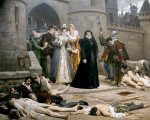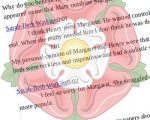
-
Transcript – Sarah-Beth Watkins – Margaret Tudor

-
Expert Talk – King’s College Chapel and Tudor Cambridge – Julian Humphrys

Enjoy the September expert chat by Julian Humphrys on King’s College Chapel and Tudor Cambridge. Julian has a real passion for the history of Cambridge, and his talk is a fascinating look at the rich history of the city.
[Read More...] -
This week in history 3 – 9 September
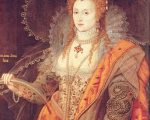
3rd September:
1553 – Edward Courtenay was created Earl of Devon. He had been imprisoned in 1538, at the age of twelve, due to his family’s links with the Poles and Nevilles, but was released shortly after the accession of Mary I.
[Read More...]
1557 – News reached London that the English and Imperial troops had been successful in storming St Quentin, and there were widespread celebrations; bonfires were lit, bells were rung and there was singing. The good news was marred, however, by news of the death of Henry Dudley.
1588 (3rd or 5th September) – Death of Richard Tarlton, actor and famous clown, in Shoreditch. He was buried in St Leonard’s Church, Shoreditch. Tarlton was a member of the Queen’s Men, but is famed for his post-play jigs as a clown.
1592 – Death of writer and playwright Robert Greene in Dowgate. He died from a fever and was buried in a churchyard near Bedlam. Greene was a prolific writer, writing autobiographical works, plays and romances, but is best known for his pamphlet “Greene’s Groats-worth of Wit bought with a Million of Repentance”, which is the first contemporary reference to William Shakespeare. It was actually an attack on Shakespeare, whom Greene accused of plagiarism, and of being uneducated.
1597 – Death of Sir John Norreys (Norris), military commander, at his brother Thomas’s home, Norris Castle in Mallow, co. Cork. He died in his brother’s arms, and it is thought that his death was due to trouble from old wounds, perhaps gangrene. Norris served as a soldier in France, the Low Countries and Ireland. -
Wars of the Roses and Tudor Battles Puzzle

The 15th and 16th centuries were bloody times and there were a lot of battles. But how much do you know about the battles of the Wars of the Roses and the Tudor period? Find out by downloading, printing and completing this fun crossword puzzle. Good luck!
[Read More...] -
The Battle of Bosworth continues

In this week’s Claire Chats, I explain the situation with Bosworth Battlefield, what it’s all about, what happened at the planning meeting and what we can about it.
Please so sign the petition at https://www.change.org/p/planning-hinckley-bosworth-gov-uk-stop-building-a-high-test-track-on-bosworth-battlefield
[Read More...] -
Live chat with Sarah-Beth Watkins on Friday (31 August) and book giveaway
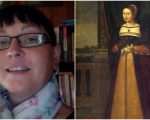
Just a reminder that our expert chat is taking place in the Tudor Society chatroom at https://www.tudorsociety.com/chatroom/ this Friday, 31st August.
Our August expert speaker, Sarah-Beth Watkins, will be joining us to answer your questions on Margaret Tudor, daughter of Henry VII, sister of Henry VIII, and wife of James IV. If you haven’t managed to watch Sarah-Beth’s talk yet, then you can watch it at https://www.tudorsociety.com/expert-talk-sarah-beth-watkins-margaret-tudor/.
Here are the times in different time zones:
[Read More...] -
Good news for Bosworth Battlefield (at the moment)
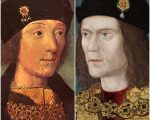
The result of the Hinckley and Bosworth Borough Council’s planning committee regarding plans to build a driverless car track on part of Bosworth Battlefield is great news for those of us who objected to the plans.
Dan Martin, reporting on the meeting on Leicestershire Live, reported that councillors voted 12 to 2 to defer on a decision tonight. This was following Councillor Stuart Bray’s proposal to defer a decision.
[Read More...] -
A defiant Mary stands up to her brother, King Edward VI, and his men
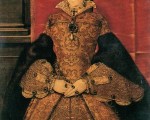
On this day in history, 28th August 1551, Lord Chancellor Richard Rich, Sir Anthony Wingfield and Sir William Petre went to Copthall in Essex to see the Lady Mary (future Mary I), half-sister of their king and master, Edward VI.
They had been sent to Copthall to deliver a message to Mary from the king. Edward VI was ordering Mary and her household to desist from celebrating the Catholic mass. Edward also ordered that Sir Anthony Wingfield should replace Robert Rochester as Mary’s comptroller.
Mary was furious with the men and refused to obey them or her brother’s orders. The men reported what happened in a letter to the king and his privy council. Here is the whole letter:
[Read More...] -
Fun with the English language

Thank you to Tim for letting me know about this video by Aaron Alon, “What If English Were Phonetically Consistent?”. It’s a fun video to watch on a Monday morning, and it’s also very interesting.
[Read More...] -
September 2018 – Tudor Life – The Dudleys

In this month’s Tudor Life magazine we delve into the life of the well known Dudley family. This family was unlike any other, and they enjoyed favour throughout the Tudor period, with Robert Dudley even possibly being a potential consort to Queen Elizabeth.
[Read More...] -
This week in history 27 August – 2 September

27th August:
1549 – The Battle of Dussindale took place, ending Kett’s Rebellion in Norfolk.
[Read More...]
1557 – The storming of St Quentin by English and Imperial forces. Admiral de Coligny and his French troops, numbering only a thousand, were overcome by around 60,000 soldiers, and St Quentin fell. Henry Dudley, the youngest son of the late John Dudley, Duke of Northumberland, was killed by a cannonball during the storming.
1590 – Death of Pope Sixtus V at Rome.
1610 – Funeral of Lady Anne Bacon (née Cooke), mother of Sir Francis Bacon, at St Michael’s Church, near St Albans. Anne was the daughter of Sir Anthony Cooke, and was known for her translation of John Jewel’s “Apologie of the Church of England”. -
Lady Margaret Beaufort Quiz
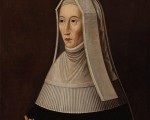
Lady Margaret Beaufort was the mother of King Henry VII and the matriarch of the Tudor dynasty, but how much do you know about her? Grab your favourite snack and beverage, make yourself comfortable and test your knowledge of this Tudor lady with our fun quiz.
[Read More...] -
Bosworth Battlefield in danger – Please act now!

I was absolutely horrified to read that there are plans to build a driverless car testing track on part of Bosworth Battlefield. According to a report in the Leicester Mercury, “Mira Technology Park wants to build the facility on 83 acres of land next to its existing vehicle testing centre at Higham-on-the-Hill near Hinckley, partially within the registered Bosworth Battlefield site”. Historic England has spoken up, saying that they fear that this could cause harm to the historic battlefield which, as Tudor Society members will know, was where the forces of Henry Tudor and Richard III met on 22nd August 1485 and where Richard III was killed.
[Read More...] -
Where does the name Tudor come from?

Thank you to my daughter Verity for inspiring today’s Claire Chats video on the origin of the name of our favourite royal house. Just where did the name “Tudor” come from?
[Read More...] -
Battle of Bosworth Resources

Today is the anniversary of the Battle of Bosworth on 22nd August 1485. This battle was, of course, the start of the Tudor dynasty because it was at this battle that the forces of Henry Tudor, who had returned from exile to claim the throne of England, defeated those of Richard III. Richard was killed during the battle and Henry was crowned King Henry VII. He ruled until his death, by natural causes, on 21st April 1509.
You can read more about the battle in our article The Battle of Bosworth – 22 August 1485, and you can also find out more about the battle and the two kings involved with the following resources:
[Read More...] -
Humphrey Llwyd (1527-1568)
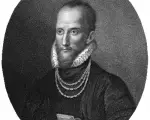
Humphrey Llwyd, antiquary, translator and cartographer was born in 1527 in Denbigh, Wales, as the only child of Robert Lloyd (Llwyd) and Joan Piggott.
After being educated at Oxford (BA and MA), he joined the household of Henry Fitzalan, 12th Earl of Arundel, in 1553. In 1559, he served as a Member of Parliament for East Grinstead and then from 1563-1567 for the Denbigh Boroughs, where he served as an alderman at that time. His position in the earl’s household led to Llwyd marrying Barbara Lumley, sister of John Lumley, 1st Baron Lumley, who had married Arundel’s eldest daughter, Jane. Llwyd and Barbara went on to have six children. Llwyd is said to have collected books for Lord Lumley.
[Read More...] -
25% off online history courses until 24 August 2018

MedievalCourses.com are commemorating the anniversary of the Battle of Bosworth this week by offering 25% off all of their online history courses from today until the end of 24th August 2018.
All you have to do is choose your course (or courses!) at https://medievalcourses.com/overview/ and use coupon code BOS at checkout. You can use the code on as many courses as you like and what’s great is that the courses don’t have a set start or end date so you can buy courses now and then start them when it’s convenient for you.
[Read More...] -
This week in history 20 – 26 August
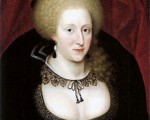
20th August:
1509 – Birth of Sir William Stanford (Staunford), judge and legal writer. Stanford served Mary I as one of her queen’s Sergeants, and is known for his legal books, “Les plees del coron” (1557), on criminal law, and “Exposicion of the Kinges Prerogative” (1567)
[Read More...]
1580 – Death of Sir George Bowes, soldier and administrator, at Streatlam, county Durham. He was buried in the family vault at Barnard Castle Church. Bowes served Elizabeth I as a member of the Council of the North and the Ecclesiastical High Commission for York, a Justice of the Peace and Sheriff, and as the Earl of Sussex’s Deputy in co. Durham and Richmondshire, and Provost Marshal. Bowes was also chosen to escort Mary, Queen of Scots from Carlisle to Bolton Castle in 1568.
1588 – A thanksgiving service was held at St Paul’s in London to give thanks to God for England’s victory over the Spaniards.
1589 – Marriage of James VI of Scotland and Anne of Denmark, second daughter of King Frederick II of Denmark, by proxy at Kronborg Castle, Helsingør, Denmark. James was represented by his ambassador at the Danish court, George Keith, 5th Earl Marischal.
1599 – Death of Sir Thomas Norris, soldier and Lord President of Munster, at his house at Mallow, County Cork, Ireland. Norris died from an injury to his jaw sustained in a skirmish with Thomas Burke and his troops in May 1599.
1610 – Death of courtier Edmund Tilney, censor of plays and Master of the Revels. He was buried in St. Leonard’s Church, Streatham, London.
1648 (or 5th August) – Death of Edward Herbert, 1st Baron Herbert of Cherbury and 1st Baron Herbert of Castle Island, diplomat, philosopher and the author of “The Life and Raigne of King Henry the Eighth”. He was buried at St Giles-in-the-Fields, London. -
Henry VIII’s Six Wives Quiz
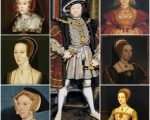
This week’s Sunday quiz is on King Henry VIII’s six wives. How much do you know about these six fascinating women? Grab a snack and a drink, get yourself comfortable, and test your knowledge with this fun little quiz – good luck!
[Read More...] -
King Francis I of France
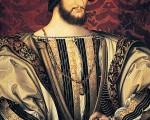
The subject of today’s Claire Chats video talk is King Francis I of France, “le Roi-Chevalier” (the Knight King) and “Père des Lettres” (Father of Letters), Henry VIII’s contemporary.
[Read More...] -
What was the legal and social status of male homosexual relationships in Tudor and Elizabethan England?

Thank you to Rioghnach for asking this question. The full question was “What was the legal and social status of male homosexual relationships in Tudor and Elizabethan England? In general; within the clergy and religious houses; and within the Royal Courts?” Historian Owen Emmerson has kindly answered it.
The legal status of gay relations over the 118 years in which the six monarchs of the Tudor dynasty ruled is a tale of two spheres which shifted enormously. For 52 of those years – during the reigns of Henry VII, Mary I and for the majority of Henry VIII’s reign – homosexuality was deemed a sin and, as such, was subject to the scrutiny of the Catholic church’s courts.
After 1533, most of the Tudor monarchs persecuted gay men not through the church but in the criminal law courts. The great schism that led to the Henrician Reformation was the arena in which the crime of homosexuality shifted from Church to State. The counter-reformation provided a five-year respite from state persecution, before the Elizabethan period in which the Act against homosexual relations was restored. The social status of gay relations during this period was far less a point of change than continuity by comparison.
[Read More...] -
Penelope Devereux, Lady Rich and Countess of Devonshire (1563-1607)
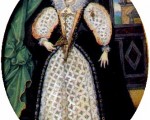
Penelope Devereux, also known as Penelope Rich and Penelope Blount, was the elder daughter of Walter Devereux and his wife, Lettice Knollys. Penelope was from a distinguished family, with her maternal grandmother being Lady Mary Boleyn, sister of Queen Anne Boleyn, and both her mother and father serving Queen Elizabeth I. Penelope’s father was rewarded for his loyal service to Elizabeth, fighting in Ireland, with the earldom of Essex, and he was a notoriously chivalric figure during Elizabeth’s early reign and the ideal model of manhood. After her father’s death, Penelope’s mother went on to marry Robert Dudley, Earl of Leicester, the queen’s favourite, in secret, causing Elizabeth to nickname Lettice “the she-wolf”. Penelope became the ward of Henry Hastings, 3rd Earl of Huntingdon, after her father’s death in 1576 and was educated in his household in Leicestershire.
[Read More...] -
This week in history 13 – 19 August

13 August:
1514 – Princess Mary Tudor, sister of Henry VIII, married King Louis XII by proxy at Greenwich Palace. Mary was present at the ceremony, but the Duke of Longueville stood in for the groom.
[Read More...]
1566 – Death of Sir Humphrey Radcliffe, member of Parliament, at his manor of Elstow. He was buried in Elstow Church. Radcliffe served as a member of Parliament during the reigns of Mary I and Elizabeth I, and then as a JP and Sheriff in Elizabeth I’s reign.
1568 – Death of William Barlow, Bishop of Chichester. He was buried in Chichester Cathedral.
1579 – Executions of Roman Catholic martyrs Friar Conn O’Rourke and Patrick O’Healy, Bishop of Mayo. They were hanged just outside Kilmallock, co. Limerick. O’Healy was tortured before his death, by having spikes driven through his hands, in the hope that he would give Sir William Drury, Lord President of Munster, details on James fitz Maurice Fitzgerald’s plans to lead a Catholic crusade to Ireland. He would not talk. O’Healy was beatified in 1992. -
Prayer Book Rebellion Quiz
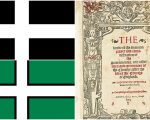
This week’s Sunday quiz is on a Tudor rebellion, the Prayer Book Rebellion. How much do you know about this rebellion? Test your knowledge with this little quiz. Good luck!
[Read More...] -
Summer reading recommendations for Tudor history lovers
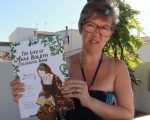
I’m just about to go on holiday so I’ve been busy putting books on my trusty kindle and it inspired me to share with you some recent Tudor history books, both fiction and non-fiction, and also some series to get stuck into.
[Read More...] -
Christopher Hatton (c.1540-1591)
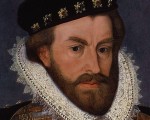
Christopher Hatton was born around 1540 during the reign of Henry VIII. He had a particularly interesting life, originating from a gentry family with few connections to the royal family. He was the second son of William Hatton and his wife, Alice, daughter of Lawrence Saunders. Very little is known of his early life, excepting that his early education is said to have been supervised by his maternal uncle, William Saunders. Regarding his later education, it is recorded that on 26th May 1560 he was enrolled in the Inner Temple. However, this part of Hatton’s life is equally as elusive; arguments suggesting that he may have been a barrister. Hatton’s fame and position came through the unusual concept, by sixteenth-century standards, of ‘social mobility’; essentially rising from one’s social class through personal merit and skill rather than relying on nepotism or family wealth. Hatton did this through monopolising on a relationship with Queen Elizabeth I, which shall be the primary focus of this article.
[Read More...] -
7 August 1485 – Henry Tudor returns to claim the throne
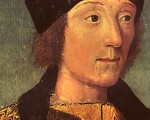
On this day in history, Sunday 7th August 1485, Henry Tudor, son of Lady Margaret Beaufort and the late Edmund Tudor, Earl of Richmond, “came unto Wales”, landing at Mill Bay, Milford Haven, Wales. Chronicler Robert Fabyan recorded that on disembarking at Mill Bay, Henry “kneeled down upon the earth, and with meek countenance and pure devotion began this psalm: ‘Judica me Deus, et discerne causam’ [‘Judge me, O God, and favour my cause’].” He then “kissed the ground meekly and reverently, made the sign of a cross upon him” and then “he commanded such as were about him boldly in the name of God and Saint George to set forward.”
[Read More...] -
This week in history 6 – 12 August

6 August:
1504 – Birth of Matthew Parker, Archbishop of Canterbury, in the parish of St Saviour, Norwich. Parker was the son of worsted weaver William Parker and his wife Alice Monings [Monins] from Kent.
[Read More...]
1514 – Marriage of Margaret Tudor, sister of Henry VIII and widow of James IV of Scotland, and Archibald Douglas, 6th Earl of Angus, at Kinnoull in Perthshire.
1549 – Battle of Clyst Heath during the Prayer Book Rebellion.
1623 – Death of Anne Hathaway, wife of William Shakespeare. Anne was buried next to her husband in the Church of the Holy Trinity, Stratford-upon-Avon. -
August Tudor People and Events Crossword

This week’s puzzle is, as usual, fun and brain-stretching. How much you do you about the August “on this day in history” events for the Tudor period? Test your knowledge with this crossword. All the answers are somewhere on this site!
[Read More...]

